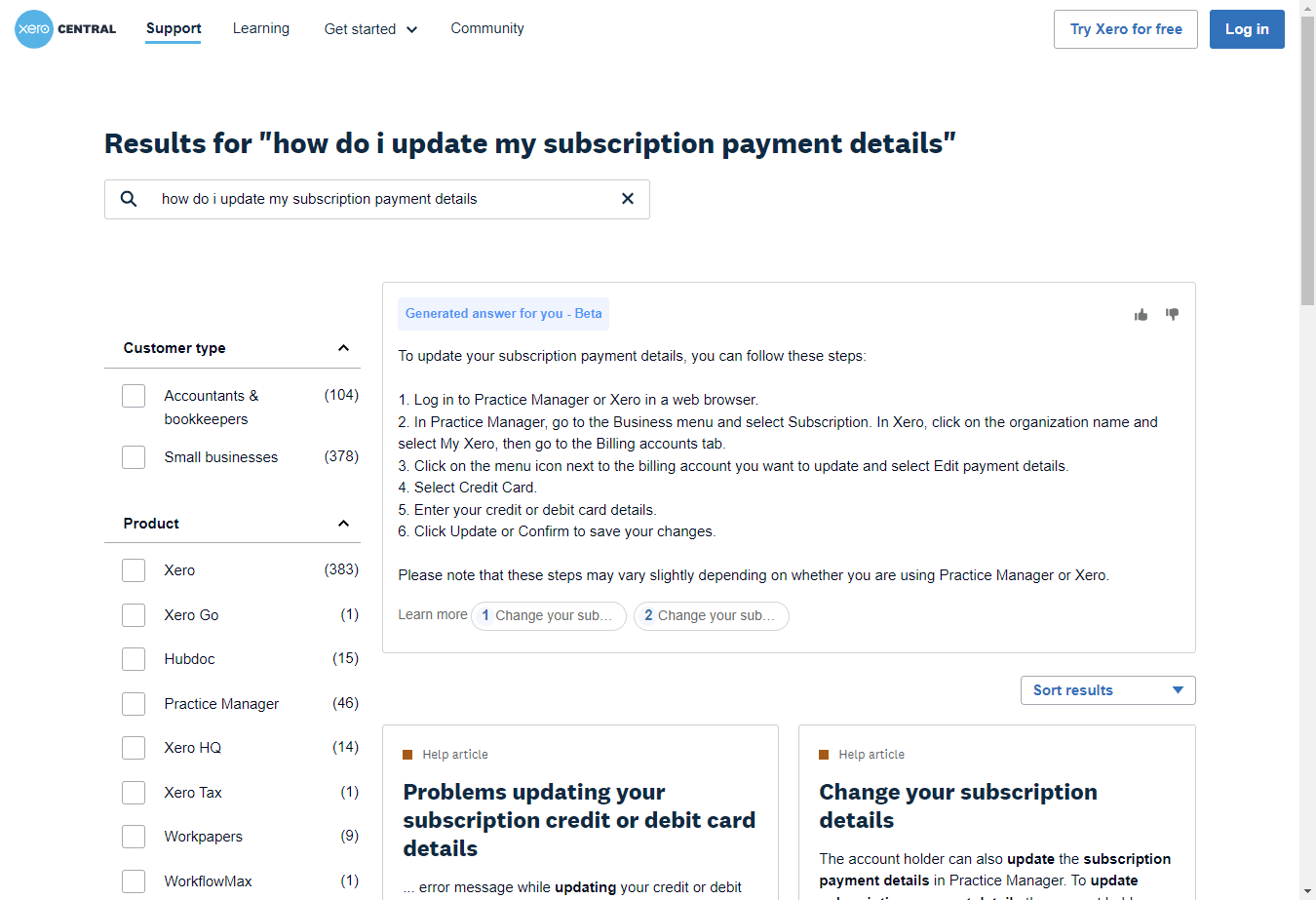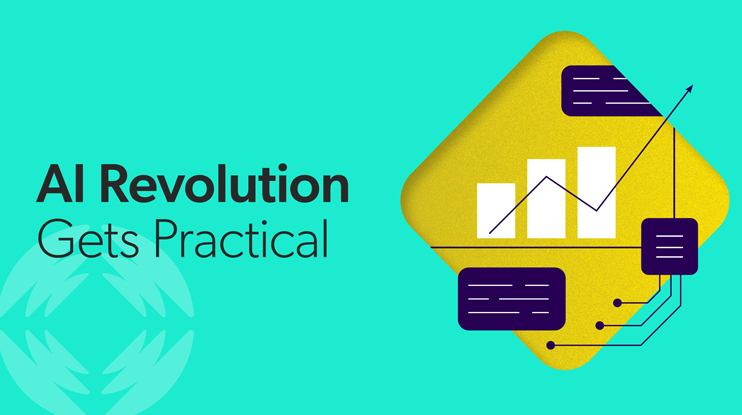The AI revolution, particularly with generative AI (GenAI), has made waves in recent years, sparking innovation, excitement, and disruption across industries.
But 2025 will usher in a new era — one that demands not only innovation but demonstrable value. In the coming years, companies will move beyond experimentation and prototypes, transitioning to enterprise-wide deployments that bring measurable returns on investment (ROI).
The AI ecosystem is maturing, and as companies seek real-world applications and proof of value, the emphasis is shifting. We’re moving from the excitement of possibilities to the pragmatic task of delivering tangible results.
In this blog, we’ll explore the key trends that will shape the AI landscape over the next few years, and how businesses can prepare to maximize their AI investments.
1. The “Show Me the Value” Era of GenAI
Generative AI has entered what many are calling the “Show Me the Value” phase. As the hype around flashy demos fades, the need for practical applications and clear ROI has never been greater. Businesses are now tasked with not only integrating GenAI into their workflows but also proving that these investments lead to measurable business outcomes.
By 2026, more than 80% of enterprises will have used GenAI APIs or models, and/or deployed GenAI-enabled applications in production environments (up from less than 5% in 2023), according to Gartner. Early examples are already pointing the way: companies using Coveo’s Relevance Generative Answering have seen case deflection improvements of up to 20%, significantly reducing contact center volumes and cutting operational costs. These measurable outcomes are key in a world where CFOs and business leaders demand clear justification for every new technology investment.

The pressure is on for AI leaders to prove their solutions can deliver. McKinsey estimates that AI has the potential to add $13 trillion to the global economy by 2030, but the firms that will benefit the most are those that can demonstrate immediate value in terms of revenue growth, cost reductions, and enhanced customer or employee experiences.
The transition from hype to practical application will drive organizations to focus on the specifics — choosing the right AI tools for the right problems. Enterprises will need to ensure they are deploying GenAI where it can deliver maximum business impact, such as automating routine customer interactions, driving personalized recommendations, or optimizing supply chain operations.
As we move into 2025, businesses that can quantify AI’s contributions to the bottom line will be the ones reaping the rewards.
Relevant Reading: Best Generative AI: 8 Strategic Questions for CIOs
2. Maturity and Consolidation of GenAI Infrastructure
A significant challenge for organizations scaling GenAI is the fragmentation of AI initiatives. Early efforts to adopt AI were often isolated experiments, with different teams within a business exploring various use cases. However, as AI matures, we’re seeing a shift toward consolidated infrastructure that supports multiple AI models across the enterprise.
By 2025, enterprises will have moved away from these siloed efforts toward unified AI platforms that integrate data access, governance, and model deployment. In this new paradigm, businesses are realizing that to scale AI, they need infrastructure that enables seamless integration across departments, functions, and geographies.
The rise of AI platforms that unify data, allow for quick deployment of models, and ensure proper governance is critical to scaling AI effectively. This will be a major theme in 2025, as companies strive to reduce the complexity and technical debt associated with maintaining multiple AI initiatives.
Moreover, the need for strong governance around AI is becoming increasingly important. Regulations like GDPR in Europe and similar data privacy regulations in other regions are putting pressure on businesses to manage AI in a compliant manner. AI systems will need to include explainable models that can provide transparency into decision-making processes to ensure compliance with emerging regulatory frameworks.
Finally, the ability to scale AI across the enterprise will not only streamline operations but also provide competitive advantages. In 2025, this convergence of AI, data, and governance will be the hallmark of mature AI infrastructures.
3. The Rise of Specialized and Right-Sized LLMs
The future of large language models (LLMs) is no longer about having one massive, general-purpose model. Instead, enterprises are increasingly recognizing the need for specialized, domain-specific models that are tailored to particular tasks. In 2025, we will see a rise in “right-sized” models — smaller, more efficient LLMs that are designed for specific use cases.
The one-size-fits-all approach of the past is giving way to more nuanced solutions. These right-sized models will enable organizations to optimize performance while controlling costs. For example, companies in regulated industries such as finance and healthcare may develop LLMs tailored to legal or compliance-related tasks, ensuring that these models are both accurate and efficient.
At the same time, we will see the proliferation of multimodal models — AI systems that can process and generate content in multiple formats, such as text, tables, images, and videos. These models will be crucial in industries like ecommerce and digital marketing, where the ability to create and analyze cross-format content is becoming increasingly valuable.
In short, 2025 will be the year where AI gets leaner, smarter, and more focused, delivering tailored solutions that provide real value for specific business functions.
4. Human-AI Collaboration and the Empowered Employee
Despite fears that AI will replace human workers, the reality is that AI is augmenting human capabilities rather than replacing them. In 2025, we will see the rise of AI-powered tools that act as “copilots” for employees, enabling them to be more productive, make better decisions, and focus on higher-value tasks.
These tools will empower employees to do more with less effort, creating a hybrid workforce where humans and AI work together seamlessly. Early adopters of these tools are already seeing significant productivity gains. For example, research from Accenture shows that prioritizing people alongside data and tech can lead to productivity gains of up to 11%, while sidelining the human factor slashes that gain to just 4%.
The implications for the workforce are profound. AI-powered tools will enable employees to make better decisions faster by providing real-time insights and recommendations. This will reduce cognitive load and free up time for more creative and strategic work. In industries like customer service, for instance, AI can handle routine inquiries, allowing agents to focus on more complex issues, ultimately improving the overall customer experience.
Additionally, AI will become a key driver of upskilling and training initiatives. As AI tools become more prevalent in the workplace, employees will need to learn how to effectively collaborate with these systems. Companies that invest in AI training programs will see their workforce gain a significant competitive advantage. A recent study by LinkedIn found that 65% of business leaders believe AI skills will be crucial for future job success.
By 2025, AI will not just be a tool for automation — it will be a partner in the workplace, empowering employees to achieve more than ever before.
Relevant Reading: 12 Generative AI Skills Needed for the Future of Work
5. Explainable AI and Ethical Considerations Take Center Stage
As AI becomes more integrated into business processes, the need for transparency, fairness, and ethical considerations is growing. In 2025, we can expect AI regulation to tighten, with new standards and regulations being introduced to ensure that AI is used responsibly.
Explainable AI will be a top priority for organizations, particularly as AI systems are used to make more critical business decisions. As a result, enterprises will need to invest in AI systems that provide clear, interpretable insights into how decisions are being made.
This is particularly important in sectors like finance, healthcare, and legal services, where decisions made by AI can have serious ethical implications. In these industries, businesses will need to ensure that their AI models are not only accurate but also fair and unbiased.
Furthermore, ethical considerations will extend to the workforce. Companies will need to be transparent about how AI is being used in the workplace and ensure that employees are treated fairly in AI-driven decisions, such as performance reviews or promotions. This will require a careful balance between automation and human oversight.
Regulatory bodies are already taking notice. In the European Union, the proposed AI Act aims to regulate high-risk AI applications and ensure that they meet strict transparency and accountability standards. Companies that fail to comply with these regulations could face significant fines, further highlighting the importance of responsible AI.
By 2025, businesses that prioritize explainable and ethical AI will build stronger relationships with customers, employees, and regulators alike, fostering trust and ensuring long-term success.
Moving Beyond the Hype — From Possibility to Performance
As we look ahead to 2025, it’s clear that the AI revolution is moving from hype to reality. The next two years will be crucial as businesses transition from experimenting with GenAI to deploying it at scale. The winners in this new era will be those that can demonstrate measurable ROI, integrate AI seamlessly into their infrastructure, and ensure that their systems are both transparent and ethical.
AI is no longer just a buzzword — it’s a practical tool that can drive real business value. Whether it’s optimizing operations, enhancing customer experiences, or empowering employees, AI is poised to transform every aspect of the enterprise.
For businesses that are willing to invest in the right AI tools and strategies, the potential rewards are enormous. By 2025, GenAI will be at the heart of business growth, driving innovation and delivering competitive advantage across industries.
Dig Deeper
Coveo is an 18-year veteran and trailblazer in the AI-powered search space, bringing revenue-driving and cost-saving solutions to businesses like Salesforce, SAP Concur, Xero, and many more. Get an on-demand demo to see what we can offer you, today:


